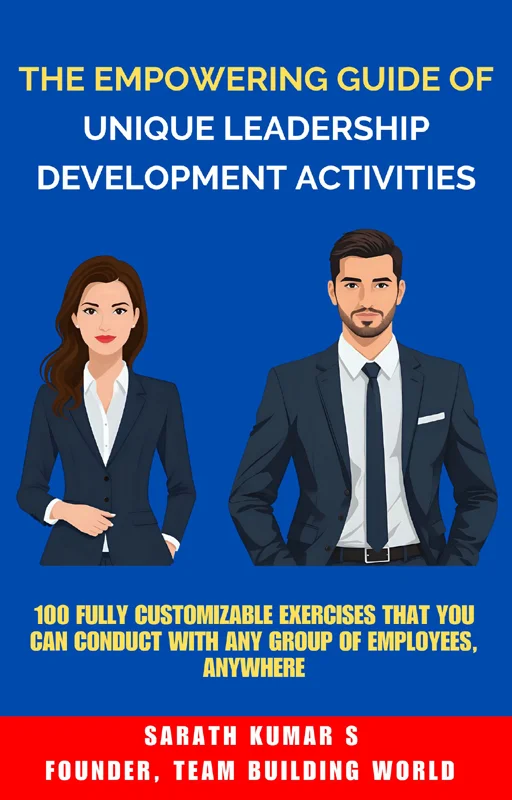10 Board Meeting Presentation Examples for Leaders
Are you looking for some board meeting presentation examples?
Creating an effective presentation for board meetings plays a crucial role in influencing decisions and guiding discussions. By clearly communicating vital information, you can align the board on major objectives and drive meaningful outcomes. Whether you’re preparing for a quarterly update or an annual review, effective communication is key.
In this article, let’s see 10 examples of board meeting presentations for leaders. They will inspire and help you perfectly convey your ideas.
Why is a Good Board Meeting Presentation Important?
Before diving into the examples, let’s understand why a well-crafted board meeting presentation is crucial.
Conveys information effectively: A well-designed presentation can simplify complex information and make it easier for the board to understand.
Sets a clear agenda: It outlines objectives, timelines, and key action items that need to be discussed during the meeting.
Facilitates decision-making: By presenting relevant data and analysis, it enables the board to make informed decisions.
Engages the audience: A compelling delivery uses visuals, storytelling, and clear communication to capture the board’s attention.
Highlights achievements and challenges: It provides a balanced overview of successes as well as obstacles, helping the board evaluate progress and strategize solutions.
Encourages collaboration: By presenting actionable insights, it promotes teamwork and collective problem-solving among board members.
10 Board Meeting Presentation Examples for Leaders
Here are some presentation examples to consider for board meetings. Each example demonstrates different techniques and styles. So, you can pick what best suits your needs and adapt it to your own pitch.
#1. Financial Overview Presentation
A financial overview presentation is one of the most important components of a board meeting. It provides stakeholders with a clear picture of the company’s performance and financial health. To ensure your financial pitch is impactful and comprehensible, follow these tips:
- Start with a concise summary of key financial metrics to give context at a glance.
- Use clear and visually appealing charts or graphs to display trends over time.
- Highlight significant changes or patterns and explain their implications.
- Avoid overwhelming the audience with too many details; focus on the most relevant data.
- End with actionable insights or recommendations based on the financial analysis.
#2. Strategic Roadmap Presentation
Creating an effective strategic roadmap presentation requires clarity, focus, and a structured approach. Begin by outlining the organization’s long-term vision and goals to set the stage for the roadmap. To ensure the pitch resonates with your audience, keep these key tips in mind:
- Clearly define the scope and purpose of the roadmap, emphasizing its alignment with overarching business objectives.
- Break down the roadmap into specific phases or milestones to show progress and deadlines.
- Use visual elements like timelines, flowcharts, and icons to make complex concepts easier to understand.
- Tailor the presentation to your audience by addressing their concerns and highlighting the benefits of the strategy.
- Conclude with a summary of critical next steps and encourage feedback to foster collaboration.
#3. Product/Service Update Presentation
When presenting a product or service update, it’s essential to communicate clearly and ensure your audience understands the full value of the updates. To make the presentation effective, consider the following tips:
- Start by summarizing the purpose of the update and the key challenges it addresses.
- Use real-world examples or case studies to illustrate the impact of the updates.
- Incorporate visuals like before-and-after comparisons or demonstrations to make the changes tangible.
- Highlight measurable benefits, such as improved efficiency, cost savings, or user satisfaction.
- End with a concise call to action, outlining the next steps or how the audience can take advantage of the updates.
#4. Market Trends and Competitive Analysis
Creating a compelling presentation requires clarity, structure, and a focus on engaging your audience. To achieve this effectively, consider the following steps:
- Begin with a strong introduction that captures attention and outlines the main purpose of the presentation.
- Organize your content into clear sections to ensure a logical flow of ideas.
- Use visuals like charts, graphs, or images to support and simplify complex information.
- Incorporate storytelling or real-world examples to make the pitch relatable and impactful.
- Close with a memorable conclusion that reinforces key points and encourages action.
#5. Operational Efficiency Presentation
When creating an effective operational efficiency presentation, it’s important to focus on clarity and relevance. So, you can start by understanding your audience and tailoring the content to address their specific needs. Also, you should keep your message concise and impactful by avoiding unnecessary jargon. For this reason, try these tips:
- Begin with a concise overview that highlights the problem and the solution you are addressing.
- Use data-driven visuals such as charts or graphs to clearly demonstrate key metrics and improvements.
- Break down complex processes into simple, actionable steps for better comprehension.
- Share case studies or successful examples to emphasize real-world application.
- End with a strong call to action that motivates your audience to implement the proposed solutions.
#6. Team and Culture Initiatives
Creating an impactful presentation requires careful planning and a focus on clarity. Start by defining your key message and ensuring it aligns with your audience’s needs. So, consider these things:
- Structure your presentation with a clear beginning, middle, and end to guide your audience logically.
- Incorporate engaging visuals, such as infographics or images, to reinforce key points and maintain interest.
- Use concise, jargon-free language to communicate complex ideas effectively.
- Practice your delivery to ensure a confident and professional style.
- End with a memorable conclusion that reinforces your message and encourages action.
#7. Risk Assessment Presentation
Creating an effective risk assessment presentation requires careful planning and attention to detail. Start by clearly defining the purpose of your pitch and the key risks you intend to address. For this, consider these things:
- Structure your content into logical sections, such as identifying risks, evaluating their impact, and proposing mitigation strategies.
- Use data-driven visuals like charts or tables to illustrate probabilities and potential outcomes.
- Simplify complex details with clear explanations to ensure your audience easily grasps the key concepts.
- Include real-world examples or case studies to provide context and make your presentation relatable.
- Anticipate questions by preparing thorough, concise answers to common concerns.
- Conclude by summarizing the risks, proposed actions, and next steps to inspire confidence in your plan.
#8. Customer Feedback and Retention
Creating an effective presentation requires a combination of clear communication, strategic planning, and audience engagement. Start by defining your core message to ensure your audience stays focused. Then, follow these steps to refine your approach:
- Keep your slides visually appealing with minimal text and impactful graphics.
- Use a logical structure to guide the flow of information, making it easy to follow.
- Practice your delivery to ensure a confident, smooth presentation.
- Tailor your language as well as examples to suit your audience’s interests and level of understanding.
- End on a strong note by summarizing key takeaways and leaving ample time for questions.
#9. Quarterly or Annual Performance Review
When preparing a performance review presentation, it’s important to ensure your content is clear, concise, and focused on key insights. Begin by defining the main objectives of your approach and aligning them with your audience’s expectations. To make the pitch more effective, consider the following tips:
- Use clear metrics and visuals, such as graphs or charts, to illustrate performance trends.
- Structure your presentation to compare goals versus achievements, highlighting progress and areas for improvement.
- Avoid overloading slides with data—focus on the most impactful and actionable points.
- Incorporate real-world examples or specific projects to give context to the results.
- Conclude with a summary that emphasizes critical achievements and outlines next steps or goals.
#10. Sustainability and Corporate Social Responsibility
When making a presentation, it’s essential to communicate clearly and keep your audience engaged. To achieve this, consider the following steps:
- Start with a strong opening that outlines the purpose and importance of the presentation.
- Use a clear slide design to maintain a professional look and feel.
- Limit text on each slide and use visuals, such as graphs or images, to complement your key points.
- Practice your delivery to ensure confidence and smooth transitions between topics.
- End with a compelling conclusion that reinforces the main message and provides actionable takeaways.
Tips for Delivering a Great Board Meeting Presentation
Here are some additional tips to help you deliver a successful and engaging presentation:
Know your audience: Before creating your presentation, consider who will be in attendance at the board meeting. Tailor your content and tone to fit their level of expertise as well as interests.
Keep it concise: Board members typically have limited time, so prioritize key points and present information in a straightforward manner. Avoid overloading your slides with text and focus on delivering impactful insights.
Use visuals effectively: Incorporate charts, graphs, and diagrams to illustrate complex data or trends. Visual elements can make your delivery more engaging and help clarify key messages for your audience.
Practice your delivery: Rehearse your pitch multiple times to ensure a confident and polished delivery. This will also help you identify any areas that need improvement and ensure you remain within the allotted time.
Be prepared for questions: Anticipate potential questions or concerns and prepare thoughtful responses. Demonstrating a clear understanding of the subject matter will help build credibility and address any doubts the board may have.
Follow up after the meeting: After the delivery, send a summary or follow-up email to address any additional questions and reiterate key takeaways. This demonstrates professionalism and ensures ongoing clarity as well as alignment.
Want Some Unique Leadership Development Activities?
If you want some unique activities to equip your employees (both in-person and virtual) with leadership skills, qualities, and mindset, you can get my new e-book:
Or Want Some Unique Team Building Activities?
If you want some unique activities for your employees (both in-person and virtual), you can get my new e-book:
Final Words
By tailoring your pitch to the meeting’s specific objectives, you can engage your audience, inspire action, and help guide effective decision-making. Use these examples as a foundation for your next board presentation to make a lasting impact. Remember to stay focused, be concise, and deliver your message with confidence. With these tips in mind, you can become a master at presenting to your board of directors.
FAQ: Board Meeting Presentation Examples
You might have these questions in mind.
What makes a board presentation effective?
An effective board presentation is clear, focused, and tailored to the audience. It should highlight key takeaways, avoiding unnecessary details while addressing critical issues. Supporting data and visuals can reinforce your message as well as maintain engagement.
How can I prepare for a board meeting presentation?
Start by researching the audience and their priorities. Develop a well-structured outline and practice your delivery to ensure confidence. Anticipate possible questions and prepare concise answers.
What type of visuals should I include?
Use visuals like charts, graphs, and slides to simplify complex information. Ensure they are clear, professional, and aligned with your message. Avoid overloading visuals with text to keep your pitch clean and impactful.
How can I handle questions confidently while presenting?
Listen carefully to each question and respond thoughtfully without rushing. Stay calm and address the inquiry with relevant information or a promise to follow up if needed. Preparation and familiarity with your content build confidence in handling any questions.
What is the best way to close a board presentation?
Summarize the main points and emphasize key recommendations or actions. End with a strong closing statement that reinforces your message and inspires confidence. Invite questions to foster open dialogue and encourage collaboration.

